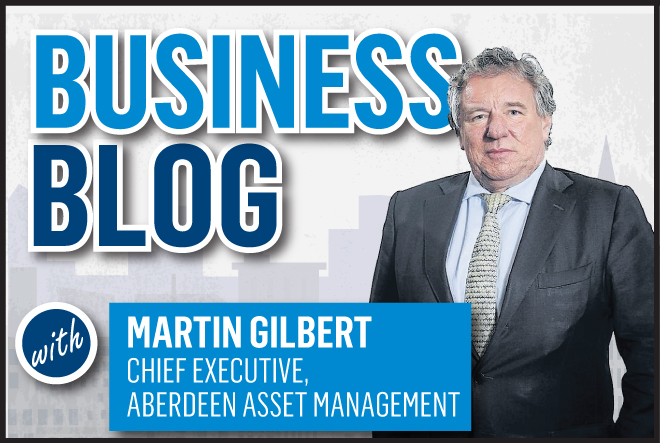The three bridges which span the Firth of Forth at or near Queensferry – the Forth Bridge, the Forth Road Bridge and the soon to be completed Queensferry Crossing – are potent symbols of how important it is to invest in infrastructure. They are all grand structures but we should not forget that the infrastructure you can’t see is as vital to the success of an economy as that which you can.
No one knows exactly when ferries first started to ply the Firth but it is certainly centuries ago. Various proposals to bridge the estuary came and went but they really began to gather steam in 1818 with the suggestion of a suspension bridge.
Work did not actually begin on a railway bridge until 1883 though. The bridge was a feat of engineering that harnessed the latest manufacturing techniques. It weighs about 50,000 tonnes, contains around 6.5 million rivets and was the first major structure in Britain to be made from steel as opposed to iron.
The Forth Bridge was a product of technological change. The advance of the railways was causing rapid change to the country’s economy. The bridge made journey times on the railway much shorter than they would otherwise have been and so helped catalyse the changes that the railways were bringing to the whole country.
Another technological innovation heralded the creation of the next Forth crossing: the car. In 1964, the Forth Road Bridge opened as another marvel of engineering. At the time, it was the fourth longest bridge of its kind. The steel wires that formed the cables for the bridge ran to 30,000 miles alone.
The road bridge was immediately popular and now carries 24 million vehicles a year – six times the original intended load. That number alone says as much as anything about the importance of the bridge to the Scottish economy. It also demonstrates the kind of demand which necessitated the new Queensferry Crossing that will mark the next chapter in these great spans across the Forth. The new bridge will be twice the height of Big Ben and consist of enough cable to stretch around the entire planet.
Each of the structures represents the latest technology of its time. Each is immensely impressive and each has made, or will make, a big difference to Scotland’s economy. But the infrastructure that you cannot see is just as vital as these grand bridges.
Take the internet for example. There’s barely a business in existence that does not rely on the internet (or that would benefit from using it if it does not). Yet too many parts of the UK suffer from poor connections. This holds back existing businesses from reaching their potential and stops new ones from being created.
One Edinburgh-based communications company recently put Aberdeen on a par with cities like Stockholm and Seoul in terms of internet speed. This is good news for the city. It is a hub for world class businesses which demand high speed internet as a pre-requisite for doing business. Such fast internet speeds can help it nurture news businesses too.
But this is a national issue. As a country we need to invest in improving internet speeds for the whole country. Too many parts of the country lack the speeds necessary for businesses to function. It’s a constant refrain that I hear from other business people. Our broadband network is extremely poor by global standards – less than 0.5% of households are connected to fibre. The internet is the defining revolution of our generation. Stopping proper access to it holds businesses back.
The country needs to get on with that investment now. For, the bridges over the Forth are testament to foresight and not just engineering. It was 72 years between the idea of a suspension bridge first being mooted and the eventual rail bridge being built. The first proposals for the road bridge were aired in 1923, yet the bridge did not open until 1964 – 40 years later. Improving our unseen infrastructure will take a long time too. The time to start is now.










